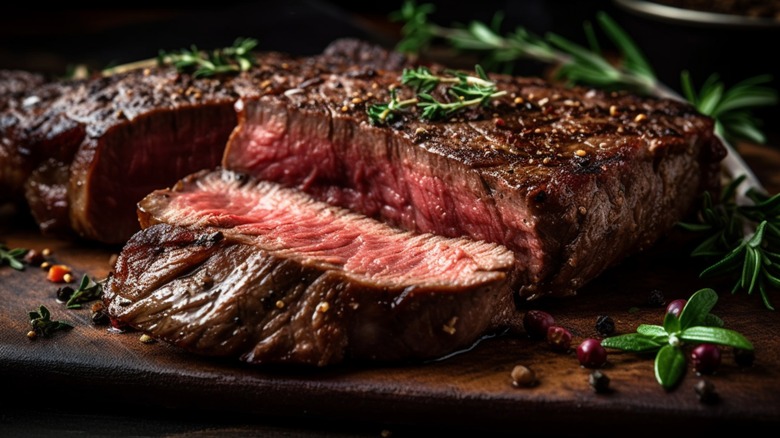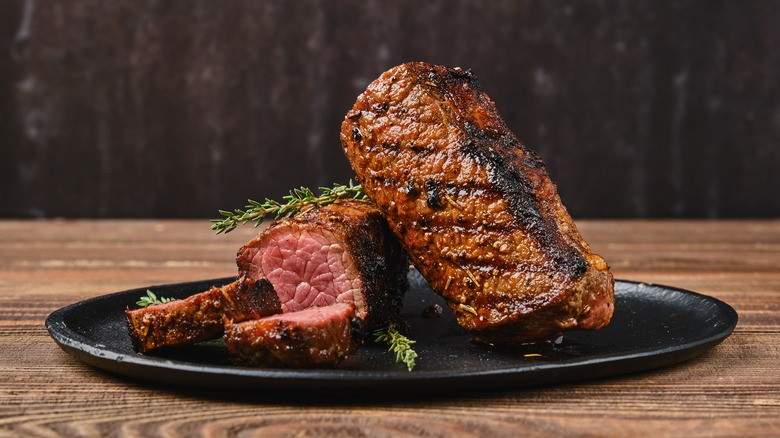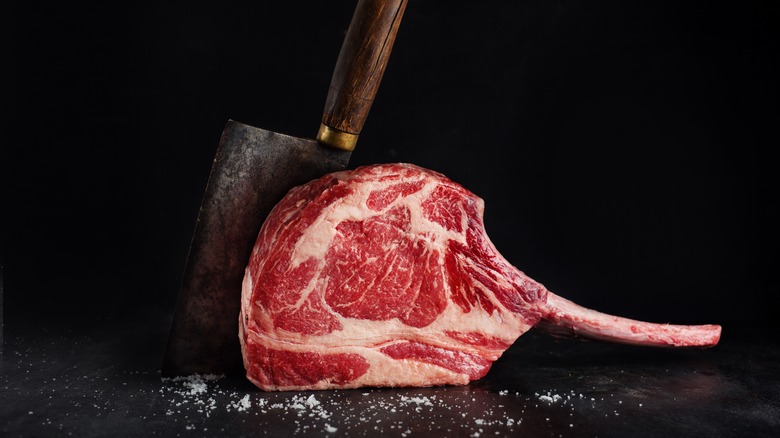Is There A Difference In Meat Quality At Grocery Stores Vs Restaurants?
If you've ever ordered a steak from a high-end steakhouse and found that it tastes nothing like the steak you prepare for yourself at home, you're not alone. While there are plenty of contributing factors, including seasonings and the cooking process, one major question probably still runs through your head: is this steakhouse beef better quality than grocery store beef? The answer isn't a simple as yes or no.
It depends on how the beef is fed, how it's aged, and how it's cut. Most grocery stores sell beef for much less than what you'd pay at a steakhouse, and that's often because the diet and aging process for that beef is more cost-effective than it is for the restaurant beef. So, in theory, most would agree that these factors mean store-bought beef is lower in quality.
Plus, the United States Department of Agriculture says that prime beef, the highest-graded beef possible, is usually served in restaurants, while choice, commercial, and standard beef grades are often sold at grocery stores.
The main differences between restaurant and grocery store meat
The "quality" of meat is somewhat subjective. If you're at a high-end restaurant, it might partner with local farms to buy chicken, pork, or beef that's free-range, grass-fed, and a slew of other lifestyle factors. Because factors like grass-fed versus grain-fed (grain-fed being the cheaper option) directly impact the meat's fat makeup, they also impact flavor. Restaurants likely use grass-fed beef, which gives it a richer flavor with better marbling; the less-expensive grain-fed beef is often what is sold at grocery stores.
Another main difference is whether meat is dry-aged or wet-aged. Wet-aged is the preferred process for meat factories because the meat is cut and packaged, then stored, which saves space and time. But this type of meat has far less flavor than dry-aged meat.
Dry-aged meat allows the meat to spend days getting more tender before it's packaged, which is a much longer process and offers far more flavor than wet-aged. It's more common in smaller butcher facilities, and due to its lengthy process and much greater flavor, it's more expensive. This is often what's served in expensive steakhouses; it's harder to find in grocery stores.
How is meat graded?
The USDA has different levels of meat quality. Prime beef is the highest-quality beef; it's fattier with a lot of marbling, giving it more flavor, and the USDA says it comes from "young, well-fed beef cattle." This meat packs better flavor in every bite and is often what you'll find at a nice restaurant.
Choice beef, the next category, is still good quality, but it has less marbling. So from a flavor perspective, the quality is lower. Finally, select beef is lean beef with much less marbling. Prime beef isn't as common in grocery stores, but the other two types can be found and will be labeled as such. However, grocery store meat is often labeled with one of two other grades: commercial or standard.
The USDA says that commercial or standard meat will often be called "ungraded" meat, or sold as "store-brand meat." If you're cooking a restaurant-quality steak at home, make sure to check the labels at the grocery store to see what the USDA has rated that specific cut. Check its aging process and whether the beef is grass or grain-fed; all of these factors are often what make restaurant meat higher-quality than grocery store meat.


